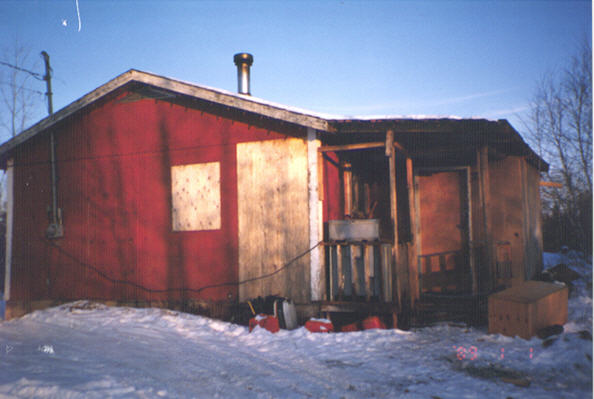Boreal
WHO KILLED CAMS?
A letter to a First Nation friend
Boreal Consulting
Ottawa, Ontario
...
April 27, 2009
Mr. Elmer Lickers
ONTARIO FIRST NATIONS TECHNICAL SERVICES CORPORATION
111 Peter Street
Toronto, Ontario
M5V 2H1
Dear Elmer,
It was a pleasure seeing you again. It had been a long time. I was pleased to hear that the system Irvin George, you, Dewey and I built is still being praised and still regarded as ahead of its time after all these years. It’s gratifying, but at the same time so sad because, as I write this, the Department of Indian and Northern Affairs (INAC) is still pouring millions of dollars in failed and failing projects in an attempt to duplicate what we did with next to nothing.
Sometimes, it is difficult for people who spend tons of money to solve a problem and get little for their extravagant expenditures to accept that competent people, with a firm grasp of the problem to be solved and the expertise to solve it can do so much with so little.
It has now been more than ten years since Ontario First Nations Technical Services Corporation (OFNTSC) offered INAC, for only a half million dollars, the First Nations Community Assets Management System (CAMS) if only the Department recognized the extraordinary accomplishment that this was. Instead, INAC demanded that OFNTSC give them CAMS for free. When OFNTSC refused they went ahead and spent, what I estimate is in excess of twenty million dollars and counting, to duplicate CAMS.
Ten years later, they are still stumbling from one multi-million dollar disaster to another in trying to better OFNTSC’s accomplishment.
In 2001, OFNTSC with private industry partner Michael Cowpland returned to INAC with a proposal to implement the Conditional Assessment and Housing Database (CAHD) component of CAMS nationwide. The government had again made some dollars available to fix deplorable housing condition in many native communities; an implementation of the CAHD would ensure that money for housing went to where it was most needed and properly accounted for.
I still remember the eloquent plea made by visionary Executive Director Irvin George and legal counsel Bill Taggart to an Assistant to Minister Nault that this was not only about health and safety but in some communities a matter of life and death. The assistant's response was to ask us to include in our cost benefit analysis the equivalent of an estimate on how much the life of an aboriginal was worth.
When Michael Cowpland, whose company ZIM Technologies had already made a substantial investment in time and money heard of this preposterous demand, which he viewed as simply a time and money wasting ploy, he abandoned the project.
With the departure of Irvin George, CAMS should have been history and the Executive Director’s dream of making OFNTSC the first significant First Nation developer of computer applications designed to help First Nation communities manage their own affairs should have died then and there if it has not been for your efforts to find a way around INAC’s obstructionism; an obstructionism born out of INAC’s resentment of OFNTSC for not handing over CAMS for nothing when it demanded it.
You travelled out West and found that it was not only First Nations who were dissatisfied with INAC's approach to developing and centralizing management information technology in Ottawa. The British Columbia regional office of Public Works/Indian Affairs agreed to try CAMS and was blown away. So please were they with the power and ease of use that they recommended it to the Alberta region.
Alberta then contacted Boreal to schedule an implementation of CAMS in that province. That is when INAC lowered the boom and doomed CAMS. Five years later, everyone is still waiting in vain, it would appear, for INAC's version of CAMS.
Before going to OFNTSC to help them build CAMS, Boreal had been the prime contractor for the Capital Asset Inventory System (CAIS) at INAC. CAIS, as you are aware, contains information on capital assets in all First Nation communities nationwide.
After the successful implementation of CAIS (at least one previous contractors had failed), Boreal was asked to build the Asset Condition Reporting System (ACRS) which tracks the maintenance on these capital assets and related cost. ACRS (pronounced acres) won the Deputy Minister’s award for Excellence, for not only exceeding users’ expectation but coming in under budget.
Boreal was a successful developer of computer-based management information systems for the Department of Indian and Northern Affairs and First Nations for almost ten years. We are keenly aware of the problems that need to be solved, but more important, we are also keenly aware of why they are not being solved and it’s not because you, me, Irvin George and Dewey Smith did not try hard enough.
I apologize for the somewhat lengthy recap of the rise and fall of CAMS before addressing your primary query about what it would cost to salvage what is left of CAMS with particular attention to the CAHD (Conditional Assessment and Housing Database) component, but I thought it important to first set the record straight.
Sincerely Yours
Bernard Payeur
Someone's home in a First Nation community (reserve) in Northern Ontario

Related: Indian Affairs - The Promise